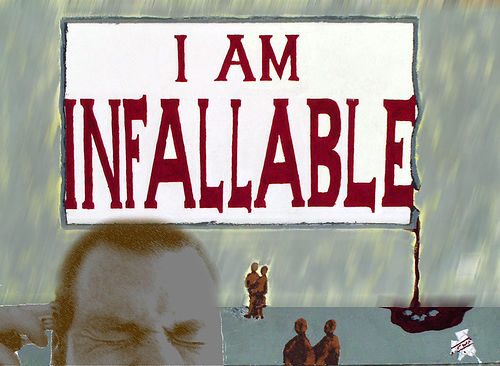
I used to play computer games, a lot, mostly of the build-a-civilization-up-from-scratch variety–Civilization, Age of Empires, that kind of thing. I’d be annoyed when people interrupted me, even for important obligations. I might have to answer the door, go back to the computer grumbling afterwards, and then two hours later the phone would ring, and I would think “Again? Can’t I have a moment’s peace?”
Addiction to behaviors
You may have noticed how similar that behavior sounds to drug addiction–and the similarity isn’t just metaphorical. It turns out that the brain chemistry of addiction to drugs is very much like the brain chemistry of addiction to food, sex, shopping, television, computer games, and much else: the neurotransmitter dopamine activates receptors in our brains when we do the thing we’re addicted to, giving us a jolt of pleasure. There’s nothing wrong with that: the same process happens whenever we feel pleasure in anything. With addiction, though, we keep repeating the activity that gave us pleasure over and over, and this causes us to be less responsive to dopamine, which creates two problems: first, we have to do more of the addictive thing to get any pleasure out of it, and second, pleasure in other things we’re not addicted to is dampened. This can keep going and going, resulting in a situation where we take every possible opportunity to do the addictive behavior and give up on everything else in our lives.
Of course, some drugs have other chemical effects on our brains that can make addiction even worse. For instance, withdrawal from shopping can be difficult, but it doesn’t usually doesn’t involve vomiting, fever, and an inability to sleep like heroin withdrawal.
Also of course, not all shopping, eating, sex, television watching, and computer gaming is addictive behavior. The next section helps explain what addiction to a behavior looks like.
What addictive behavior does
Addictive behaviors may not start because the behavior itself is especially pleasureable. As cleverly-designed as games like Civilization are, they’re not necessarily a rollercoaster of pleasure so much as some pleasure interspersed with long periods of obsessively reacting to prompts. Like sex, shopping, eating, and television, computer gaming is something that we can lose ourselves in: almost all of our attention and awareness is caught up in improving food production in our capital city, or in comparing the stitching on one jacket compared to another, or in being passively entertained by a literally nonstop parade of television shows.
This can be a key insight for some of us: addictive behavior may not be so much about wanting the thing we’re doing too much of as about shutting out something we don’t want to face. Failure, feeling unsafe, conflict, lack of love in our lives, unfulfilling jobs–these things and many more can cause us to turn away from life and lose ourselves in running up credit cards or systematically munching through a large bag of Doritoes or playing World of Warcraft straight through the night.
Unfortunately, distracting ourselves from our problems rarely does anything to make them better, and the addiction tends to create problems of its own, damaging relationships, threatening physical and financial well-being, and otherwise pushing out things we’d need to do to make our lives better in favor of more and more of the addiction.
The second article in this series can be found here and talks about ways to overcome addictive behaviors.
Photo by DJOtaku
Like this:
Like Loading...
 Some time back I posted here about Impostor Syndrome, which was a recent topic of discussion on Codex, the online writing group I run. That discussion led to my most recent “Brain Hacks for Writers” column on Futurismic, “Wait, you’re not a real writer at all!” which you can read here: http://futurismic.com/2011/09/28/wait-youre-not-a-real-writer-at-all.
Some time back I posted here about Impostor Syndrome, which was a recent topic of discussion on Codex, the online writing group I run. That discussion led to my most recent “Brain Hacks for Writers” column on Futurismic, “Wait, you’re not a real writer at all!” which you can read here: http://futurismic.com/2011/09/28/wait-youre-not-a-real-writer-at-all.









